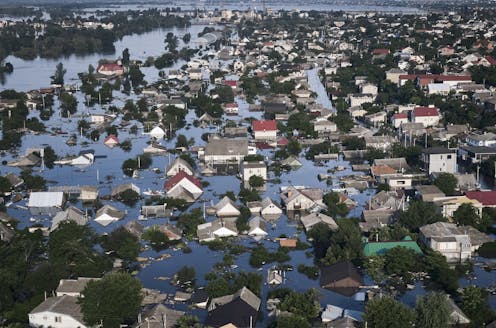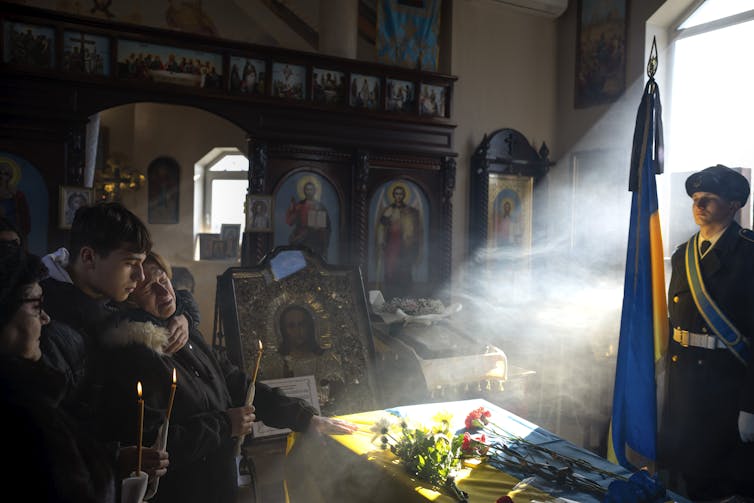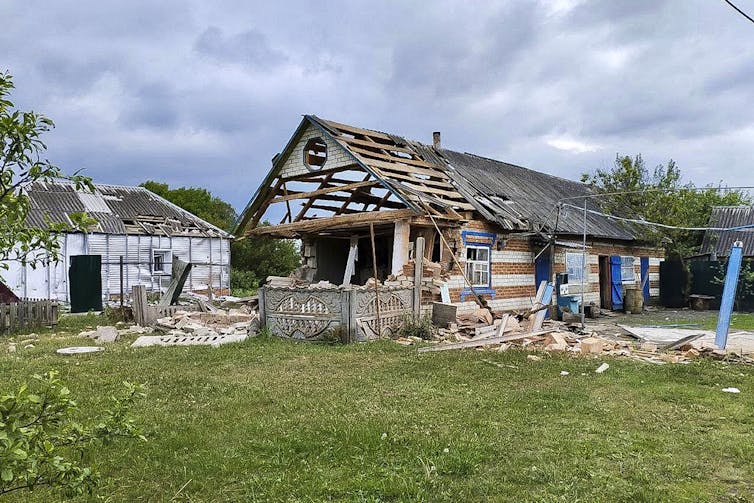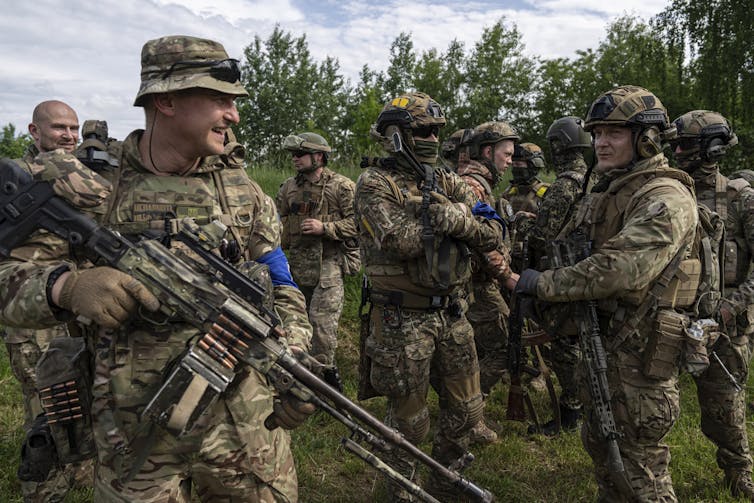
The war in Ukraine continues more than a year after Russia’s invasion and shows no signs of abating. An attack on a Ukrainian dam is just the latest development in a long and drawn-out conflict.
In the coming months, Ukrainian forces hope to make impressive inroads into Russian-occupied territory.
This war, by most analyses, is a conventional conflict. While there have been unconventional elements in the war, such as the weaponization of refugees, the focus of both states remains on their regular armed forces.
Read more: Russia's invasion of Ukraine fuels a refugee crisis that could help Putin win the war
As the war progresses, however, we are witnessing more irregular elements — in particular, paramilitary groups — enter the conflict. Critically, they don’t appear to operate under the direct control of either Ukraine or Russia.
While these units give both parties tactical advantages they otherwise would not possess, the loose nature of their control also means they can undermine their respective war efforts.
Approaches to war
War often creates elements that its practitioners could not, or did not, account for at the outset of the conflict.
For Russia, the war has not gone according to plan. Russia’s determination for the conflict to end in some semblance of victory alongside Ukraine’s desire to resist that by any means, however, is creating a potentially dangerous dynamic.
Both sides, from the outset, have employed non-traditional assets. Before the current phase of the conflict, Ukraine fully integrated the Azov Assault Brigade, a far-right military regiment, into its armed forces. Russia, meanwhile, has made extensive use of forces not directly affiliated with the army — most notably the the Wagner Group, which is among several paramilitary organizations it’s employed.

Following orders
While these forces aren’t traditional armies, many of them have been following state directives.
The Azov Brigade attempted to hold Mariupol in the initial phase of the war.
The Wagner Group is still operating in a manner consistent with conventional army methods and goals, even though it employs tactics many find morally questionable, including human-wave attacks that involve relying on sheer and overwhelming numbers of front-line attackers to subdue another force.
Paramilitaries have long been employed in conflicts. By their nature, paramilitaries operate outside the standard army chain of command. Their removal from direct army hierarchy often creates ambiguity about who issues orders to them.
The Wagner Group, for example, has a documented fraught relationship with the traditional Russian armed forces.
This ambiguity has military and political advantages. Specifically, paramilitaries can perform actions in which states do not want to be held complicit. In a world where the standard of proof is quite high when it comes to justifying military attacks due to the consequences of war, paramilitaries largely fail to meet this standard.
While paramilitaries can be useful for states at war, their ambiguity can also create complications for the states employing them. Questions will always surround how much control a state possesses over them. Nowhere is this more evident than in the recent incursions of forces loyal to Ukraine in the Belgorod Oblast in eastern Russia.

An alliance of convenience
Soldiers recently crossed the Ukrainian-Russian border to attack Russian villages in the Belgorod Oblast. Two Russian paramilitary groups operating with the Ukrainian Army, the Freedom of Russia Legion and the Russian Volunteer Corps, claimed responsibility for the attacks.
While these forces are aligned with the Ukrainian government, they have their own agenda. Staunchly opposed to Russian leader Vladimir Putin — making them allies of convenience to Ukraine — both groups also have neo-Nazi connections.
This is problematic given Russia’s repeated efforts to falsely portray Ukrainian authorities as Nazi sympathizers.
Read more: Decrying Nazism – even when it's not there – has been Russia's 'Invade country for free' card
The Ukrainian government claims the two groups acted independently. In fact, it’s likely the groups operated without explicit orders from the Ukrainian government. That is standard operating procedure for paramilitary groups.
The problem is when paramilitaries work against a supposed ally’s interests. Ukraine’s current interests and focus are on attacks against occupied Ukraine, not on Russian citizens on Russian soil.
Ukraine needs the continued support of western countries. Despite Russian claims that the West wants to escalate the conflict, outside countries’ ad-hoc, material support of Ukraine indicates they want to prevent the conflict from expanding.
Consequences beyond Russia
While it’s true that Ukraine has had some success with attacks on Russian soil, they’ve primarily been aimed at military installations. Airfields and supply depots have been focal points as they advance the Ukrainian war effort.
The recent attacks by the Russian Volunteer Corps and the Freedom of Russia Legion, however, lack such focus.

Even before the recent attacks, Russian government officials blamed the United States and its allies for Ukrainian-backed attacks on Russian soil. Officials in the U.S. and Europe, however, have been hesitant to provide arms that could be directly used against Russia.
The fact that both paramilitary organizations used equipment initially supplied to Ukraine by western donors is likely to aggravate such concerns.
These attacks are likely to become commonplace as time progresses. Drones of unknown origin recently managed to strike several Moscow buildings.
Although Ukraine denies responsibility for the Belgorod attacks, and at this stage there is no reason to doubt this claim, the country’s employment of paramilitaries and other groups make it difficult to prove otherwise as well.
James Horncastle does not work for, consult, own shares in or receive funding from any company or organisation that would benefit from this article, and has disclosed no relevant affiliations beyond their academic appointment.
This article was originally published on The Conversation. Read the original article.







